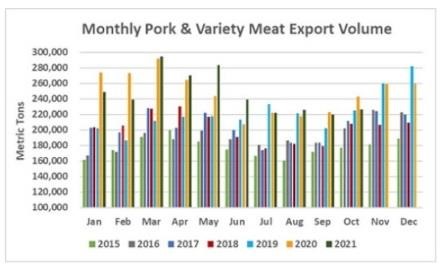By Donald Wyse
Don Wyse has long been an evangelist for perennial crops. The University of Minnesota professor, who leads the U of M Forever Green Initiative, now thinks the potential of those crops is beginning to be realized.
"It took us 30 years to get to this point, but we now have what I call real crops that have real possibility for the marketplace and for planting by farmers,” said Wyse. “And it's really, really exciting.”
Perennial crops can help reduce the environmental impact of agriculture, and they fit well with the regenerative agriculture movement that focuses on soil health.
The largest crop yet of Kernza was recently harvested. Research shows Kernza improves water quality by reducing fertilizer pollution of water, and it can efficiently store carbon in the soil, helping reduce carbon dioxide, a greenhouse gas.
It also requires less fertilizer and pesticide than many traditional crops.
“It’s basically continuous living cover, protecting soil and water, enhancing soil health. That's the basis of all 16 crops that are being developed in the Forever Green Initiative,” said Wyse.
Kernza is just the first of 16 perennial crops being developed at the U of M as part of the effort to make Minnesota farms more environmentally friendly.
Researchers at the University of Minnesota have worked with the Kansas-based Land Institute, to improve Kernza genetics.
KernzaGrain fights climate change and makes a tasty Minnesota beer
General Mills sustainability chiefHealthy food needs healthy soil
RelatedAs foodies seek local, Midwest farmers go global
There are still challenges for farmers and plant breeders. Kernza yields tend to decline after two years, limiting how long farmers can keep the crop on a field.
Wyse is confident that problem will be resolved as new varieties are developed.
The U of M released a new Kernza variety last year and a second variety is slated for release in 2023.
Farmers aren't yet busting down the door to grow Kernza, but there's a steady stream of people calling, wanting to learn more about the crop, said western Minnesota farmer Carmen Fernholz, an early adopter who first grew Kernza on his farm in 2011.

Minnesota farmer Carmen Fernholz likes the environmental benefits of Kernza, but also believes it can be profitable.
Kernza is a cousin of wheat, developed from a perennial grass. Researchers tout its sweet, nutty flavor for use in baking, beer and a cereal product General Mills plans to soon have on the shelves at Whole Foods.
Fernholz recently sold a semiload of the grain to a food company. He’s part of the new Perennial Promise Growers Cooperative, created to help farmers produce and market the grain.
"It's certainly not to the scale that we intend to take it over the next few years,” said Fernholz. “But to say that the market is developing, yes. To say that we can grow lots and lots of acres at this stage of development, no."
Cereals and snacksGeneral Mills boosts eco-friendly grain Kernza
From 2015U of M works to make Kernza the wheat of the future
And that's always the challenge with a new crop. Farmers want to know there's a market before they plant, but to expand markets, you need more crop to sell. Fernholz will expand his Kernza acres next year. As an organic farmer, he believes in the environmental benefits of perennial crops, and it helps his bottom line.
"If we can continue to achieve the numbers that we are as far as marketing the Kernza, and the yield that we're getting, it will definitely be profitable,” he said.
The drought this year reduced his Kernza yields somewhat, but the deep-rooted perennial plant generally fared well in the dry conditions.
“Relative to a lot of the other small grains, it appears that it was less impacted,” said U of M researcher Jacob Jungers. “The plants look healthier, generally, they were a little bit greener, and look less drought-stressed than some of the annual small grain crops.”
Researchers are still analyzing this year’s crop yields to learn more about the drought impact.
Kernza is very small in terms of crop production with about 4,000 acres grown nationwide.
Minnesota is the leading producer with just over 1,300 acres.
Jungers believes it's now realistic to double Kernza production each year.
"There's a tipping point in terms of acreage in the state and in the nation,” he said. Once we achieve that sort of tipping point of acreage, then there's going to be enough supply for the larger companies, for national-scale product."
"We're also getting significant international interest,” said Colin Cureton, director of adoption and scaling for the Forever Green Initiative.
"So there's really a need to grow to meet that. How do we export this product from Minnesota to the world is a big and exciting question."

Don Wyse, a professor in the University of Minnesota's Department of Agronomy and Plant Genetics, stands in a field of a perennial wheatgrass called Kernza.
Kernza is still a niche crop, and researchers say it will likely never replace mainstay grains like wheat.
But this a good time for perennial crops to be taking off, said Cureton. There’s growing interest among farmers in soil health, carbon storage and regenerative agriculture, and crops like Kernza are a good fit. There’s also growing demand from consumers for sustainable agriculture.
Click here to see more...